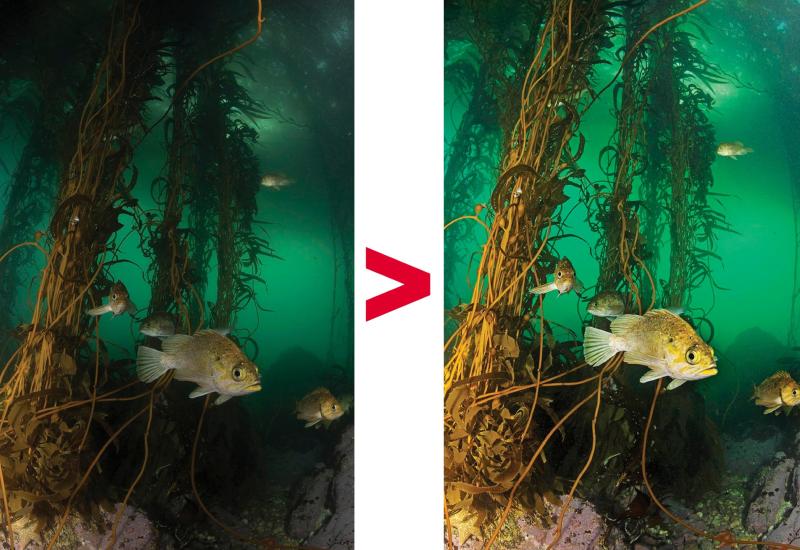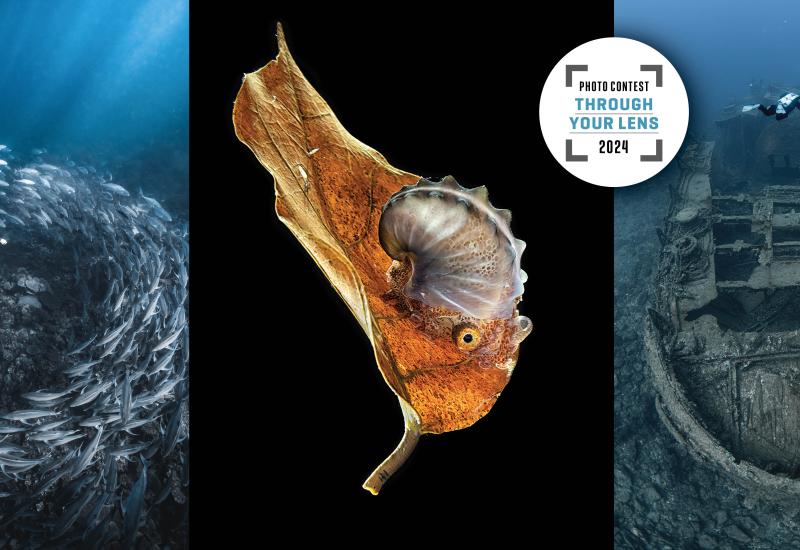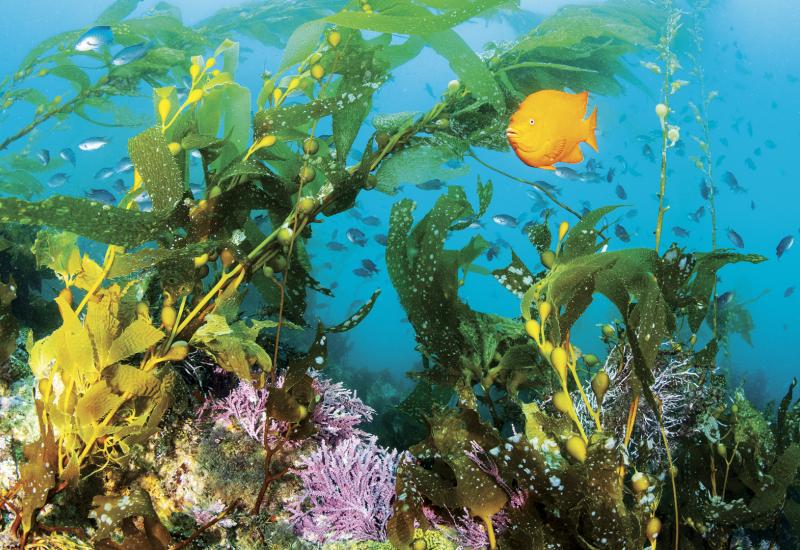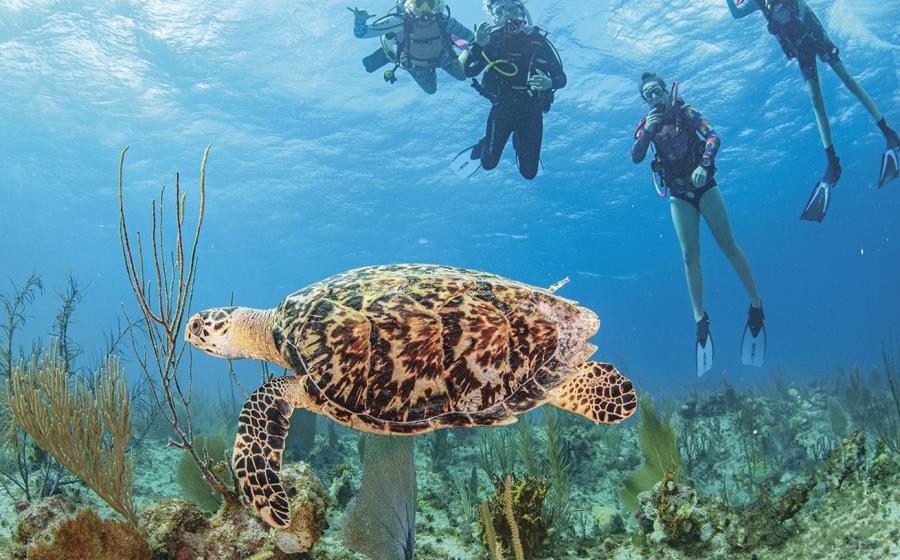Underwater Photography Tips: How to Take Night-Dive Photos
As the ocean transforms from bright blue to inky black, a host of nocturnal creatures emerges and provides photo ops that simply don’t exist during the day.
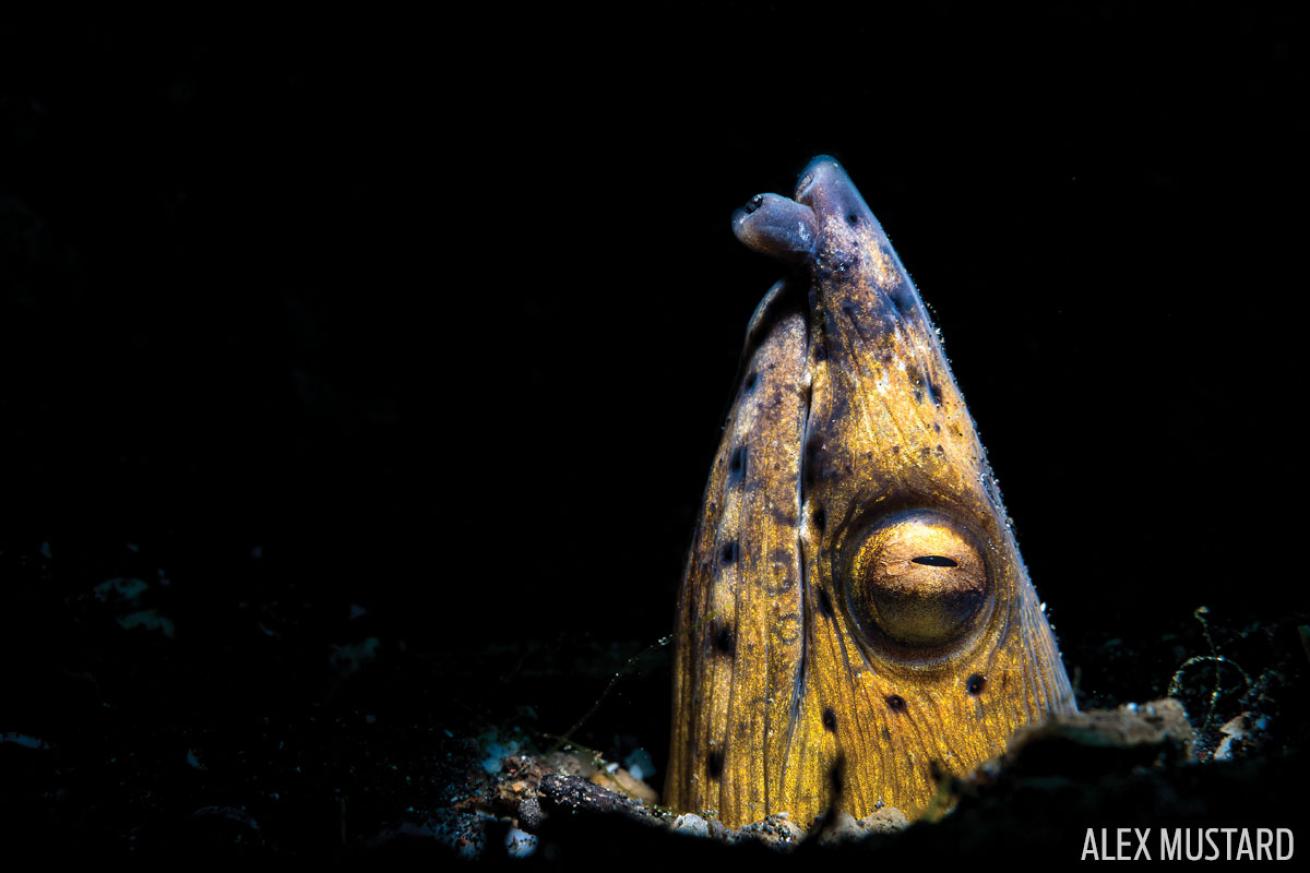
Alex MustardGet your camera low and frame subjects against open water to incorporate a strong black background.
This is especially true in muck-diving destinations, where shooters even make two-tank night dives because this time is so productive. The first hurdle of night photography is actually going! Too many choose to spend their evenings in the bar rather than the ocean.
Photography Tips
1 ) Soft and Wide
A focus light is essential for enjoyable and productive nocturnal photography because, unlike a standard dive light, it gives a wide, soft beam that is easy to aim and less likely to startle critters. Avoid a really bright light; you won’t need one once your eyes are used to the dark. Dimmer lights won’t halt behaviors, and they give you more time to shoot before a subject scuttles for cover. Always mount the light on your camera rather than occupy a hand by hold- ing it. If planktonic worms are plaguing you, attach the light on a long strobe arm above the housing.
2 ) Red Zone
Red light does not penetrate water well, and the eyes of many marine species are not sensitive to these wavelengths. Therefore, a focus light with a red-light mode can be close to invisible for many subjects, and allow you to focus and frame. Red lights tend to be most effective with shrimps and crabs, and less so with fish, especially those that live in shallow water. The downside of a red light is that it is harder to spot critters in the first place, and the scene you see is monochrome, which hampers composition. Choose a light that allows you to switch between red- and white-light modes during the dive.
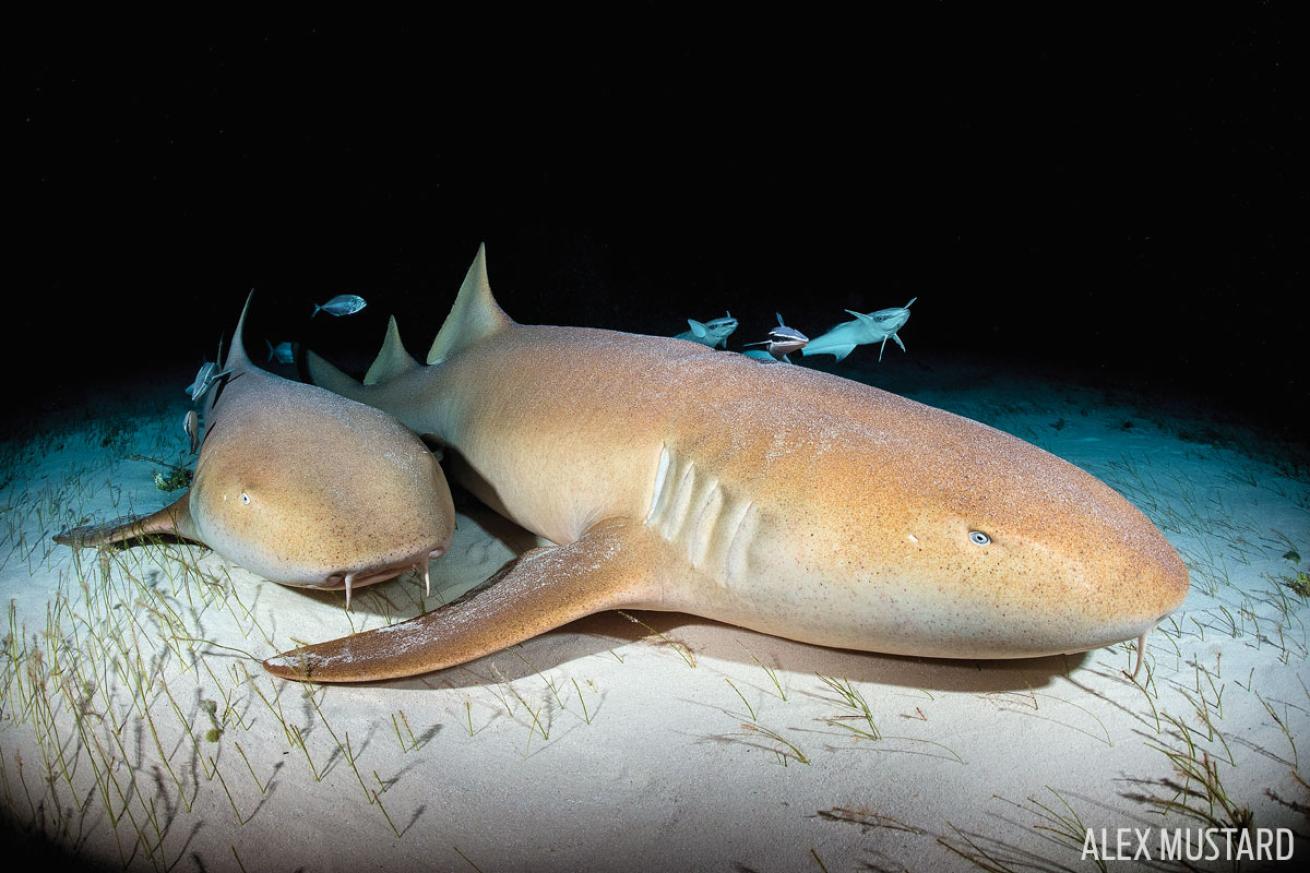
Alex MustardChallenge yourself to try wide angle at night.
3 ) Wide-Angle Challenge
Night dives provide plentiful subjects but also challenges in focusing and framing. When in doubt, shoot macro. But if you get to night-dive regularly, challenge yourself to try wide angle at night. Wide angle suits many larger nocturnal subjects, such as basket stars and stingrays. However, at night your strobe lighting needs to be exemplary, because you don’t have any ambient light to cover mistakes in aiming. When including divers, slow the shutter speed to make the beam of their light show. Don’t be afraid to go slow; there is no ambient light to cause blur.
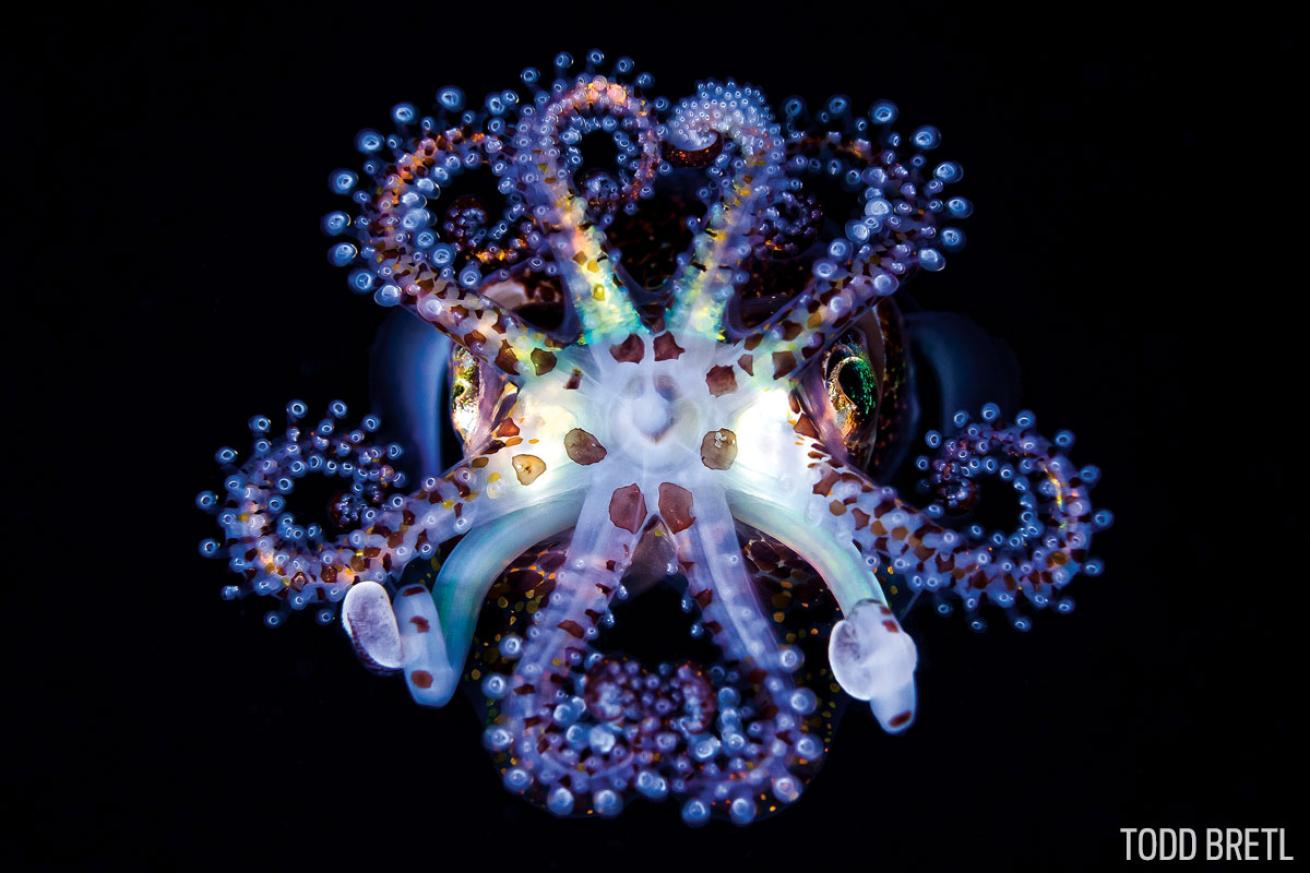
Todd BretlMany subjects — like this bobtail squid found off Anilao in the Philippines — shine at night.
Tips for Diving and Shooting at Night
Beginner Tip
Excuse the name-dropping, but recently I chatted with a keen diver named Kate — although, given the formal occasion I used a different title: Her Royal Highness the Duchess of Cambridge! She told me that she loves night dives because the colors look so intense and all the smaller creatures appear. Focusing on these two aspects is great advice for any night-diving photographer. Night dives should always be slower.
Work your way around the site at a nudibranch’s pace, taking time to look for tiny critters. Photographically, it is more productive to keep techniques simple — I set up my strobes for standard front lighting and leave them alone. Since there are often shrimps, crabs and other beasties emerging every- where on the reef, you can boost the color of your shots by first searching for bright corals, sponges or anemones and then hunting for subjects there. When you find something interesting, you will already have a vibrant background.
Post Production Tips for Night-Dive Photos
Intermediate Tip
Mini beasts emerge at night, which makes it a popular time to shoot supermacro. The good news is that supermacro is no more challenging in the dark.
The bad news is that it is a tough technique! I’d definitely recommend waiting for benign sea conditions before going super, and trying it for a few dives in a row to really get in the zone. Supermacro rewards those with exemplary in-water skills, and while there is often a need to steady the camera with a two-finger hold, there is no reason or justification to lie on the reef to shoot these shots.
When I am shooting supermacro I like my camera to be slightly negatively buoyant so it holds my head down and makes my legs pivot up away from the reef. Next, look for a small dead area on the reef on the right-hand side of the subject and hold this with a finger and thumb from your left hand. Your left forearm will now be across your chest and will provide a perfect support for the port of the housing, giving maxi- mum stability to shoot while your legs float free.
Advanced Tip
Black-water diving is a relatively new trend in underwater photography that has swelled in popularity in the past five years. It is a unique experience in inner space, involving drifting in midwater with only a light, suspended at depth beneath the dive boat as a point of reference. The attraction is seeing the rare and bizarre animals that migrate up from the depths under the cover of darkness to feed. Popular subjects include fish and crustacean larvae, jellyfish and cephalopods. Finding and framing subjects is tough, so select a wider macro lens and be prepared to crop. Autofocus can struggle with constantly moving tiny, transparent creatures, so use a fixed manual focus and try to fire off a series of frames when the subject is in range. Angle your strobe in from the side to help pick out translucent subjects.
About the Author: Dr. Alex Mustard is a marine biologist who has been a full-time photographer since 2004. His latest book, Underwater Photography Masterclass, is out now. To see more of his work, visit amustard.com.


